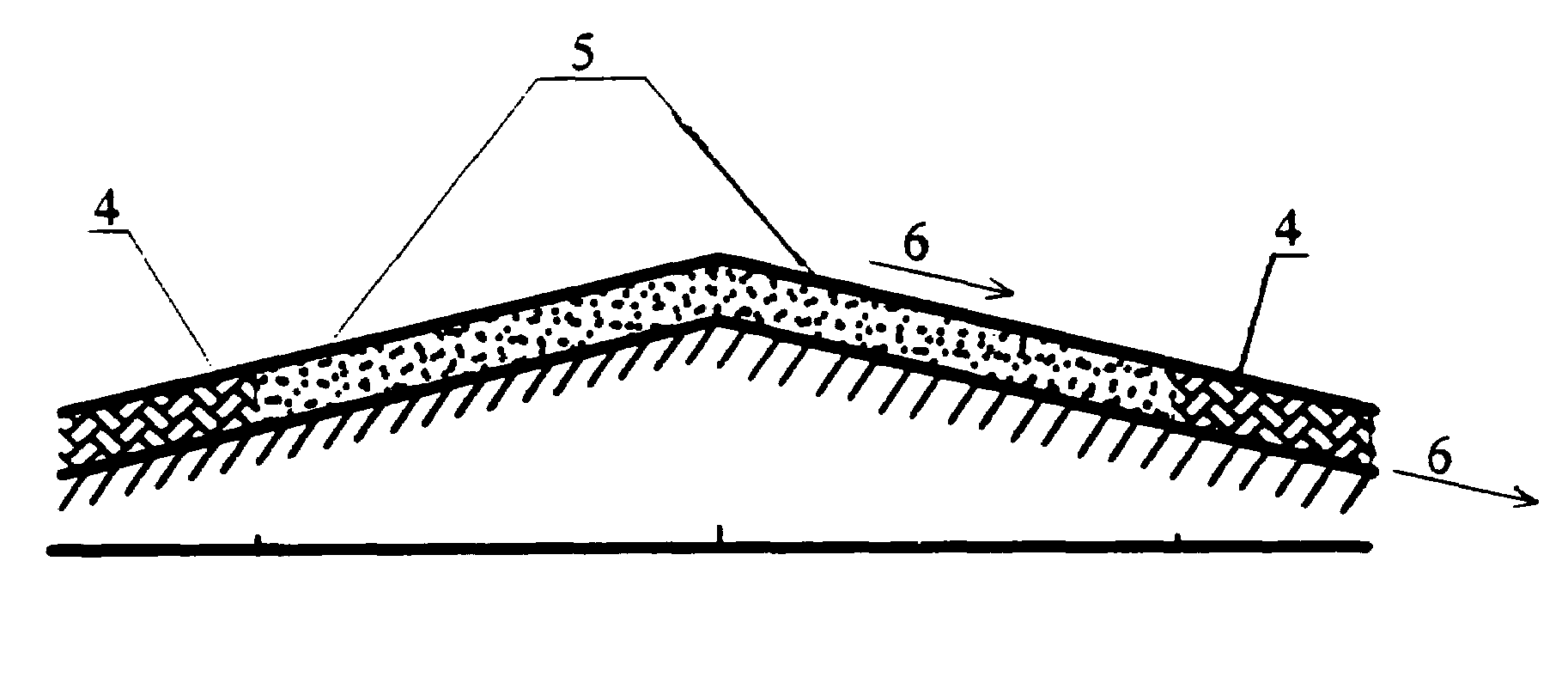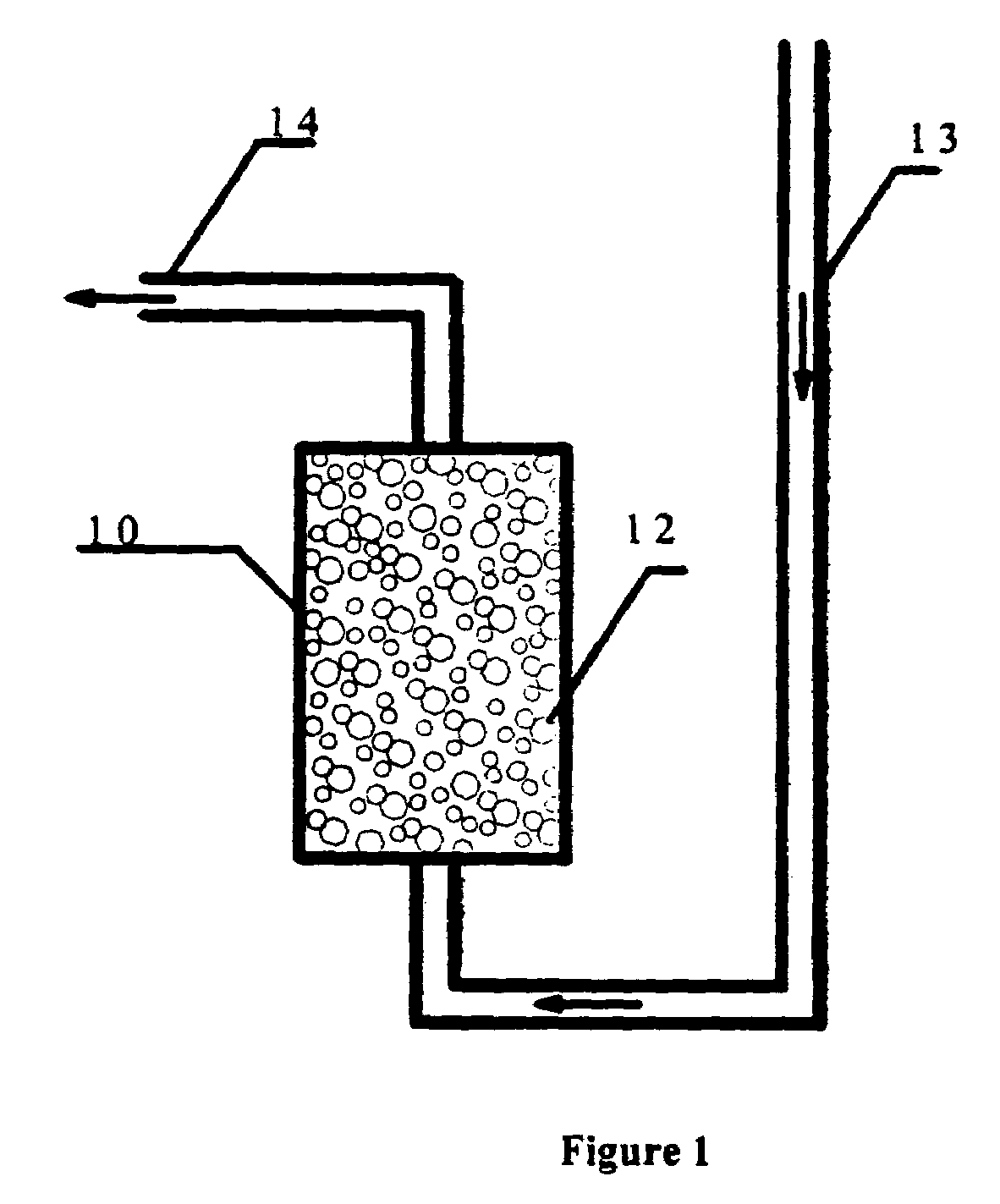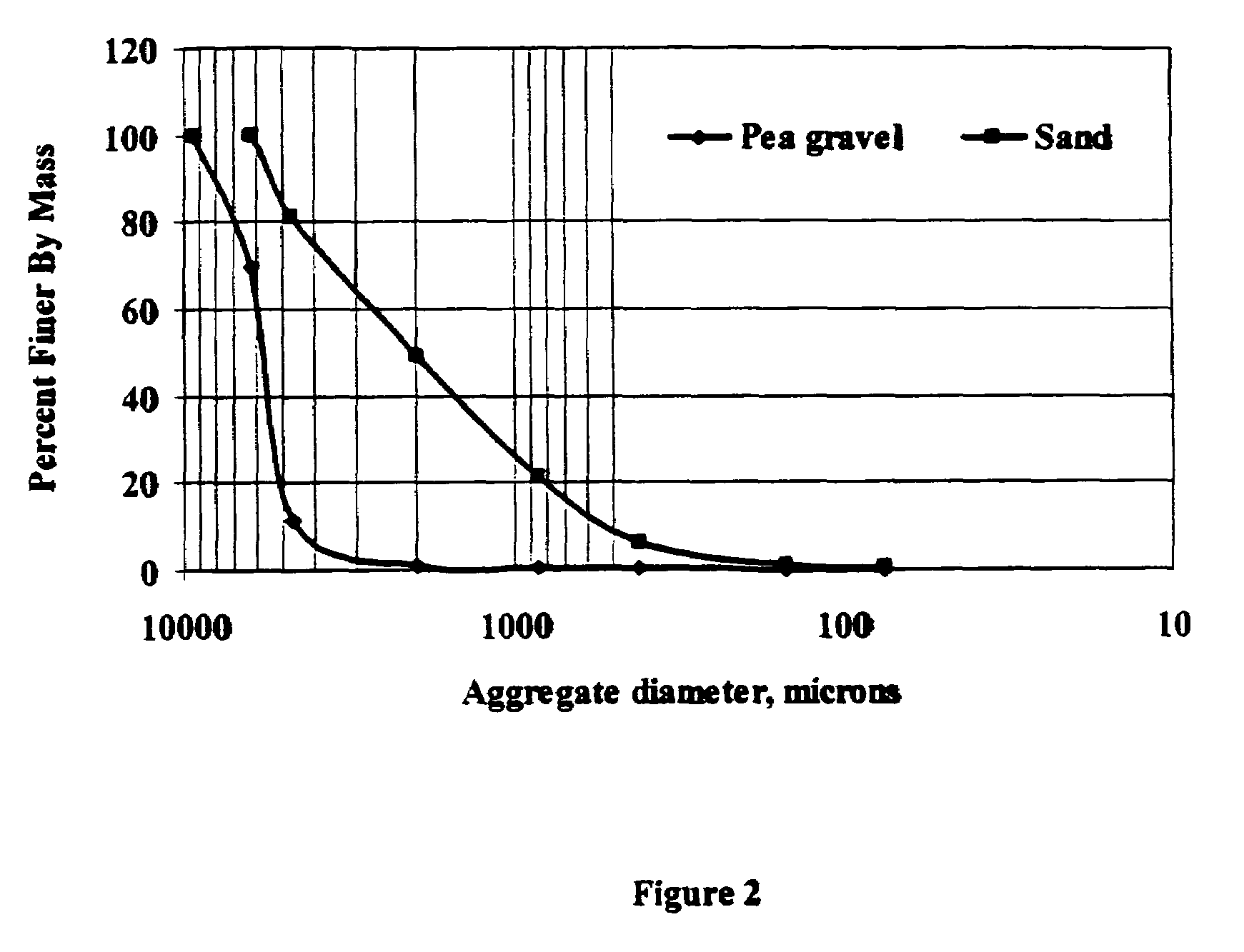Cementitious porous pavement
a cementitious and porous pavement technology, applied in the direction of separation process, other chemical processes, ways, etc., can solve the problems of relatively little absorption capacity of gac, ineffective removal of dissolved metals, and very little capacity of sand to remove dissolved metals
- Summary
- Abstract
- Description
- Claims
- Application Information
AI Technical Summary
Problems solved by technology
Method used
Image
Examples
Embodiment Construction
[0030]The filtering media of the present invention generally comprises an adsorptive-filtration media. The media is adsorptive in that it will include a substrate with an amphoteric compound bonded to the substrate to produce a high specific surface area media capable of adsorbing (i.e. the physico-chemical capture of) ion contaminants. The media may also have a filtration characteristic which relies on the purely physical capture of contaminants which are larger than the void spaces in the media.
[0031]In one general embodiment, the invention includes a granular substrate with an amphoteric compound bonded thereto in the presence of a crystal inhibiting agent. The granular substrate could be sand or any other granular substrate such as crushed limestone, crushed concrete, or other granular substances. In another general embodiment, the present invention includes all substrates having a specific surface area of 0.1 m2 / gm or greater and having an amphoteric compound bonded to the subs...
PUM
| Property | Measurement | Unit |
|---|---|---|
| hydraulic conductivity | aaaaa | aaaaa |
| length | aaaaa | aaaaa |
| mass | aaaaa | aaaaa |
Abstract
Description
Claims
Application Information
 Login to View More
Login to View More - Generate Ideas
- Intellectual Property
- Life Sciences
- Materials
- Tech Scout
- Unparalleled Data Quality
- Higher Quality Content
- 60% Fewer Hallucinations
Browse by: Latest US Patents, China's latest patents, Technical Efficacy Thesaurus, Application Domain, Technology Topic, Popular Technical Reports.
© 2025 PatSnap. All rights reserved.Legal|Privacy policy|Modern Slavery Act Transparency Statement|Sitemap|About US| Contact US: help@patsnap.com



